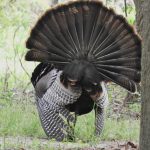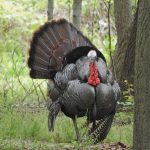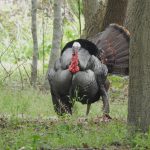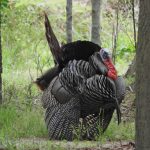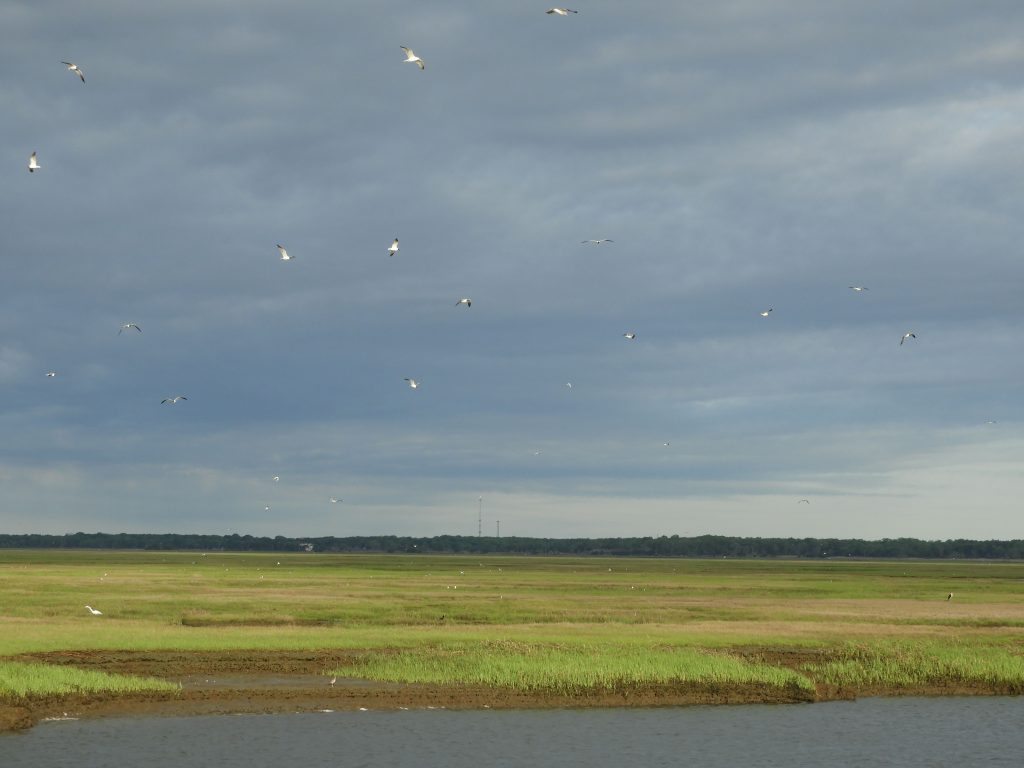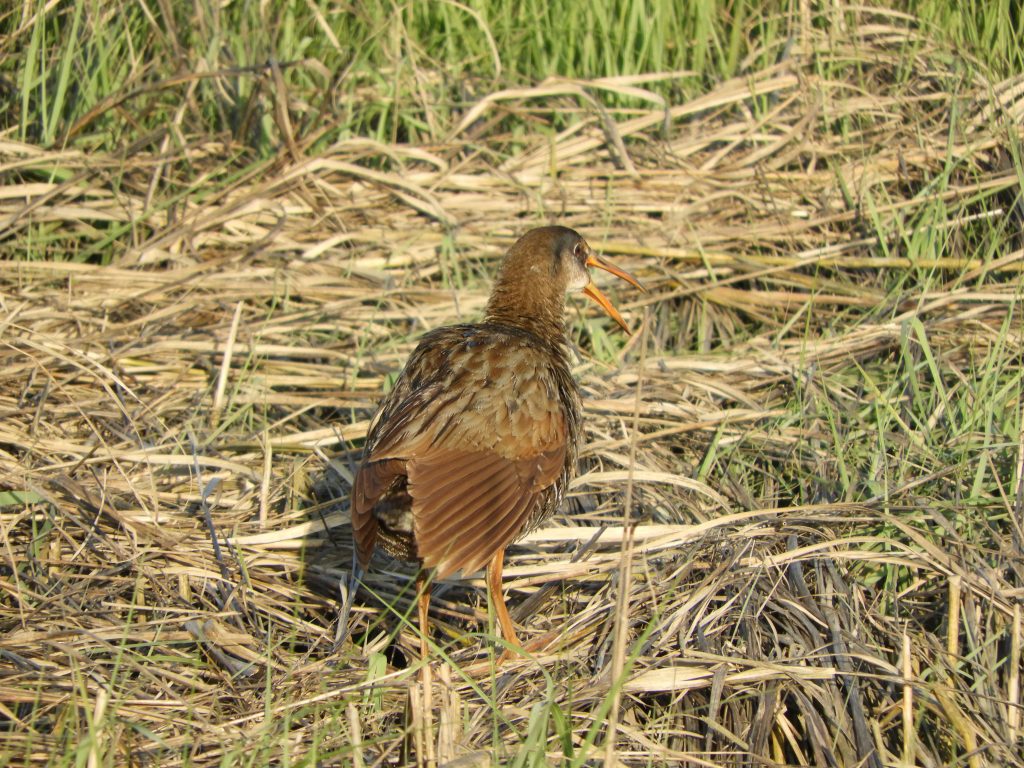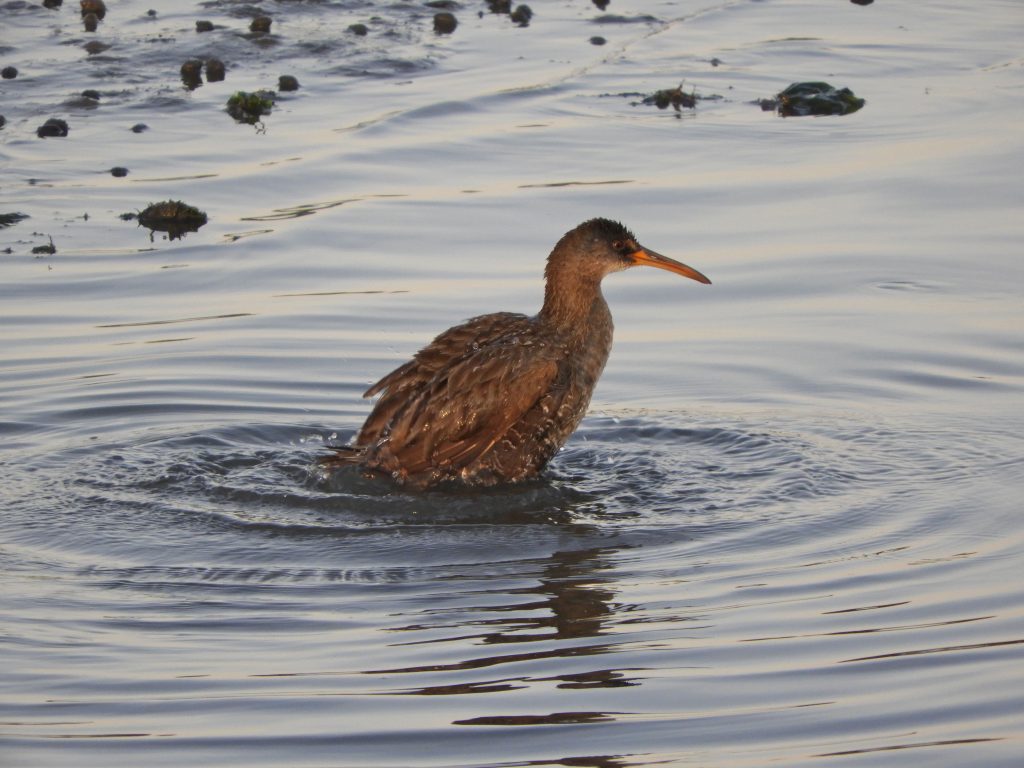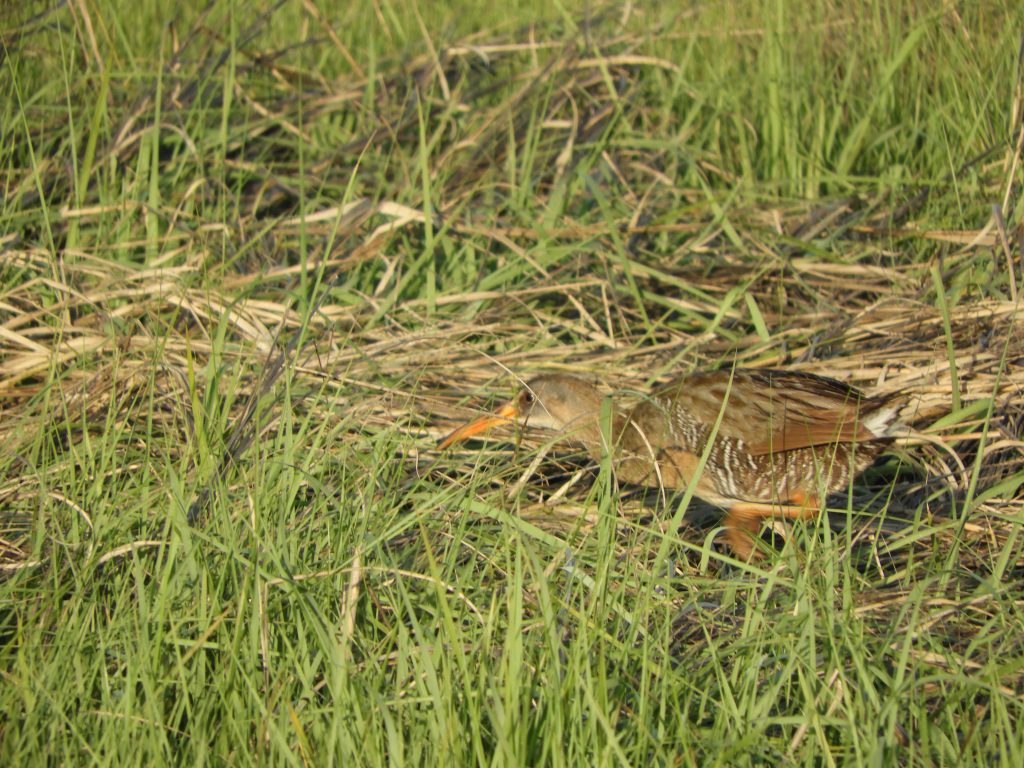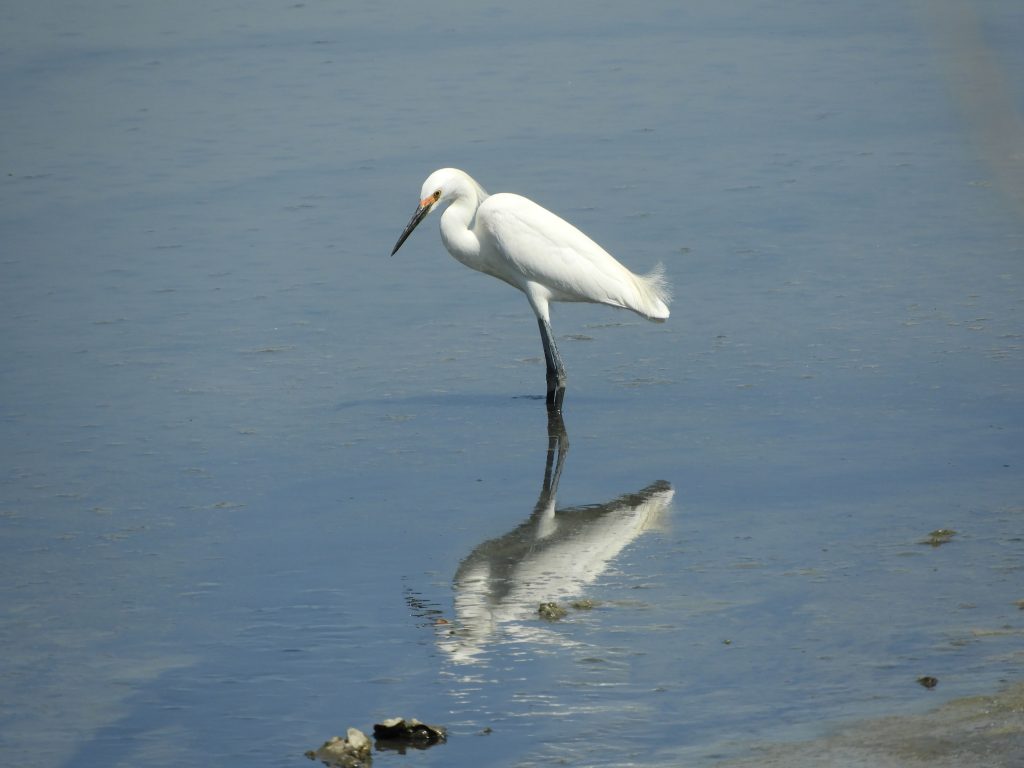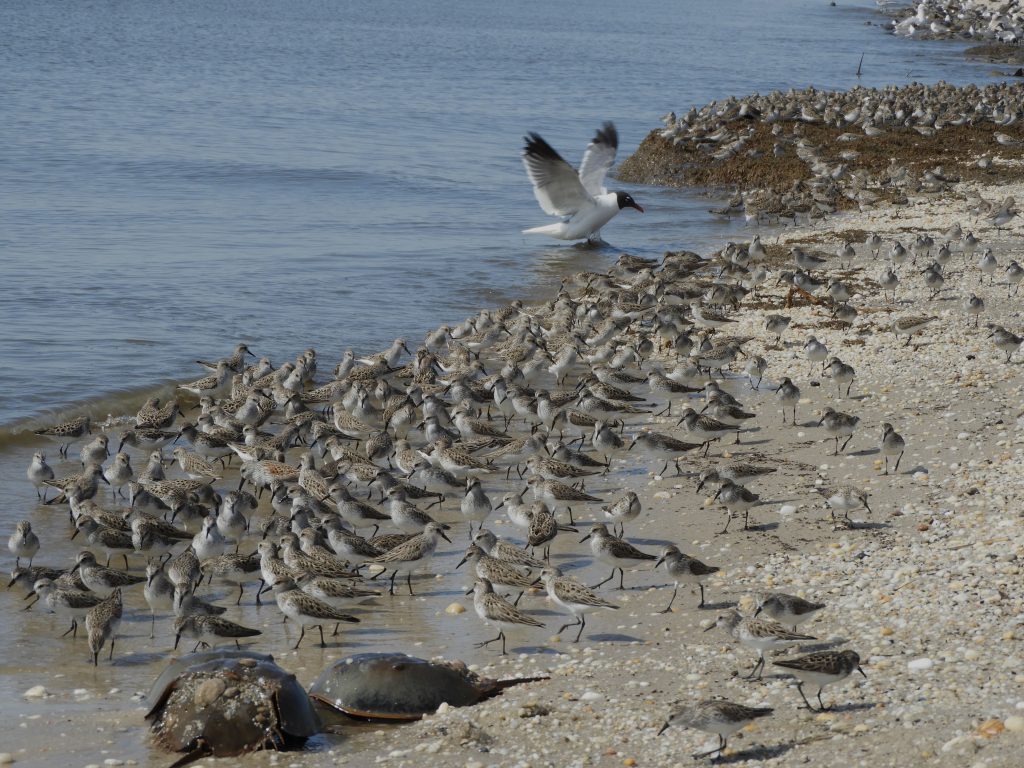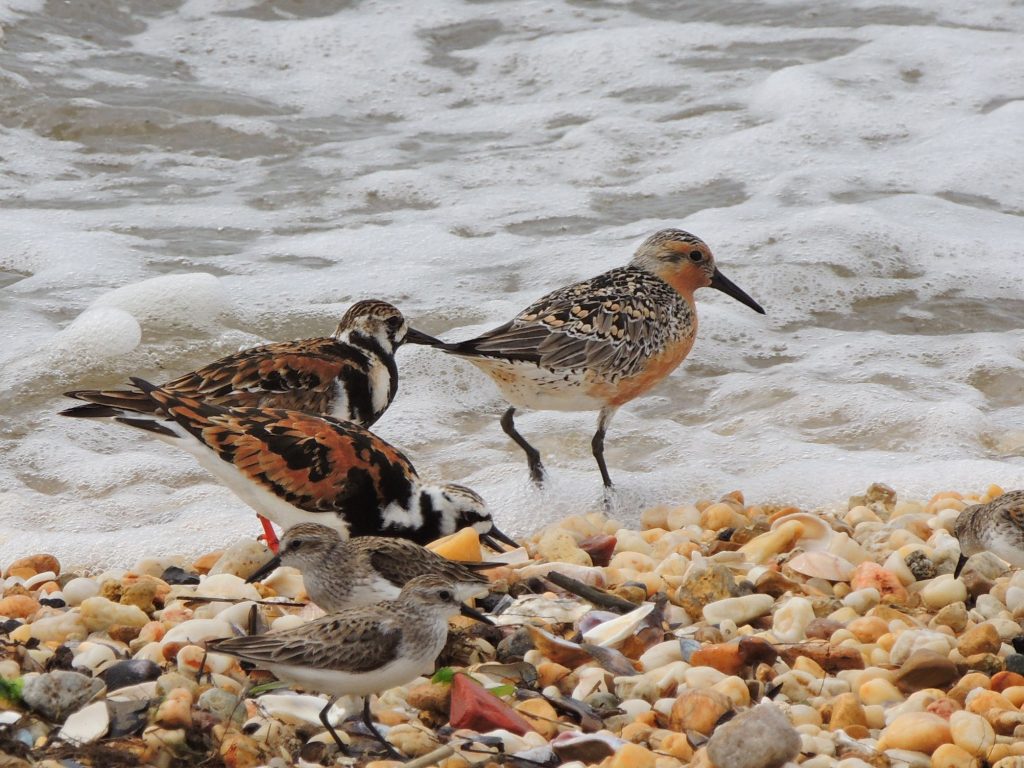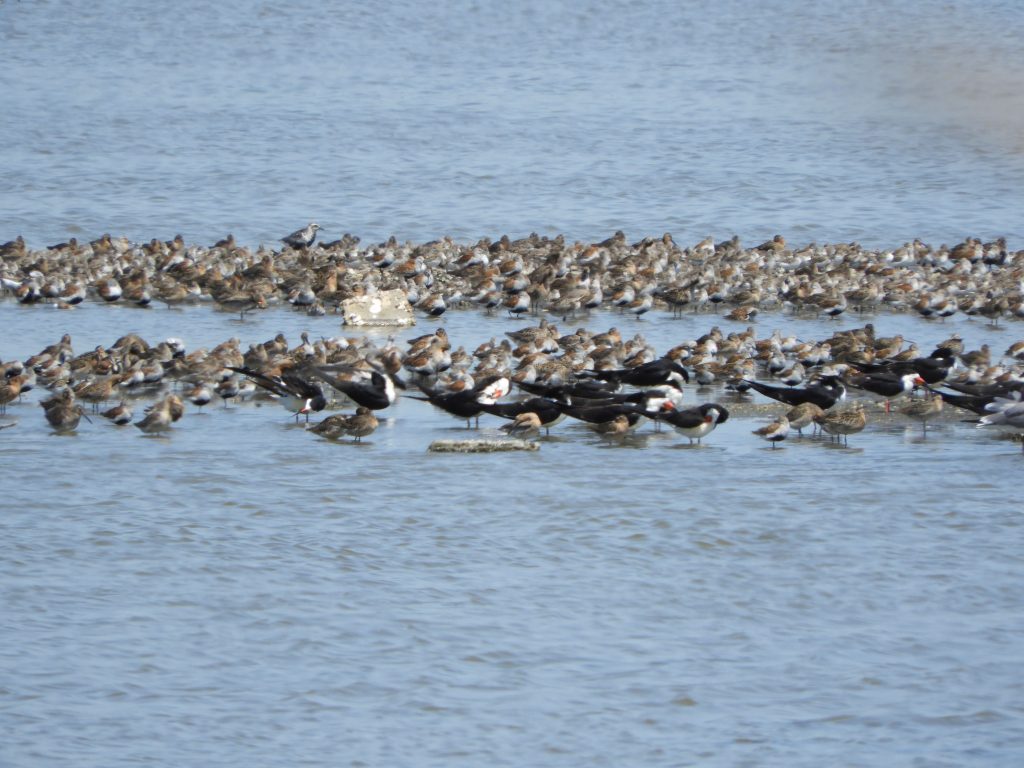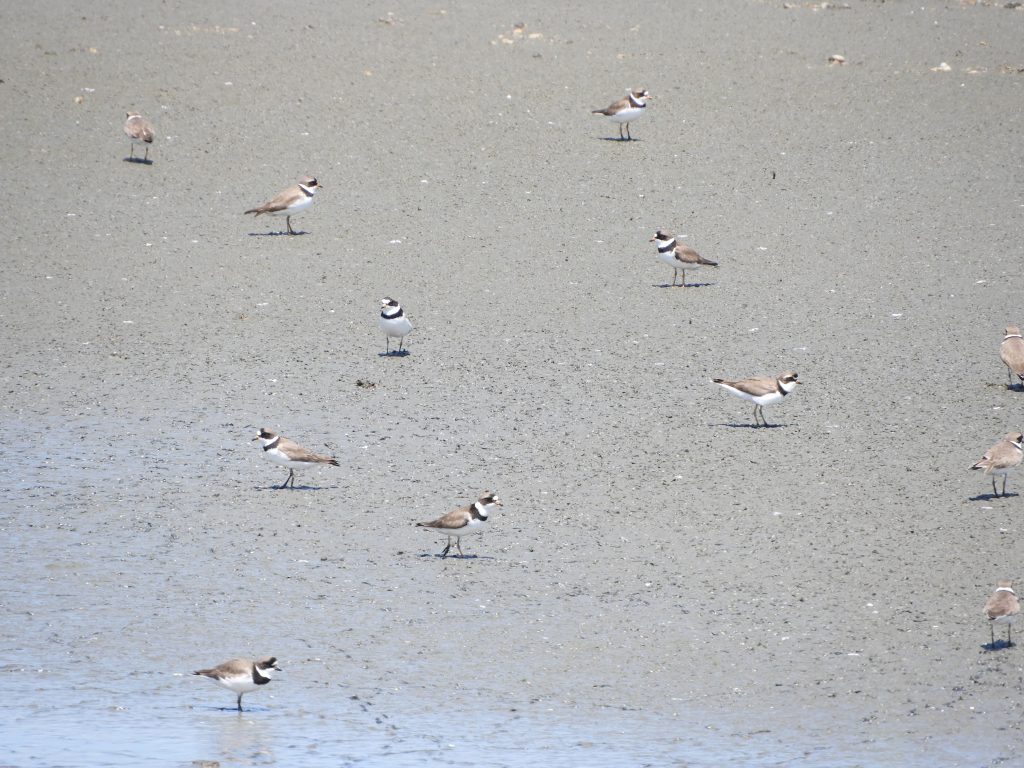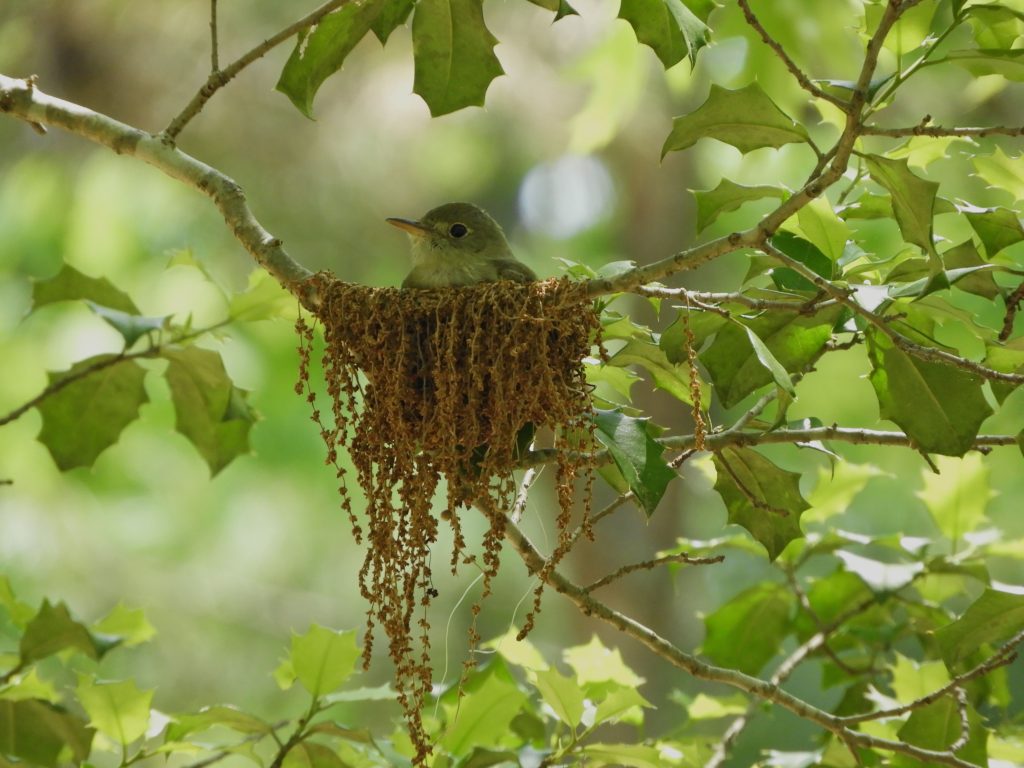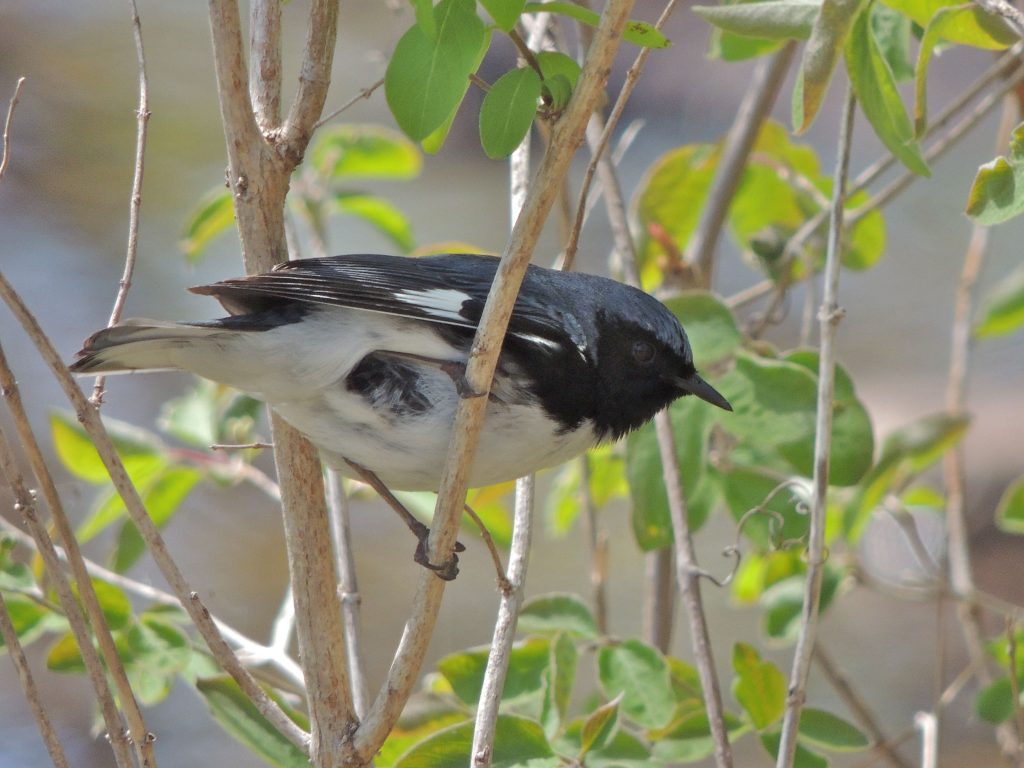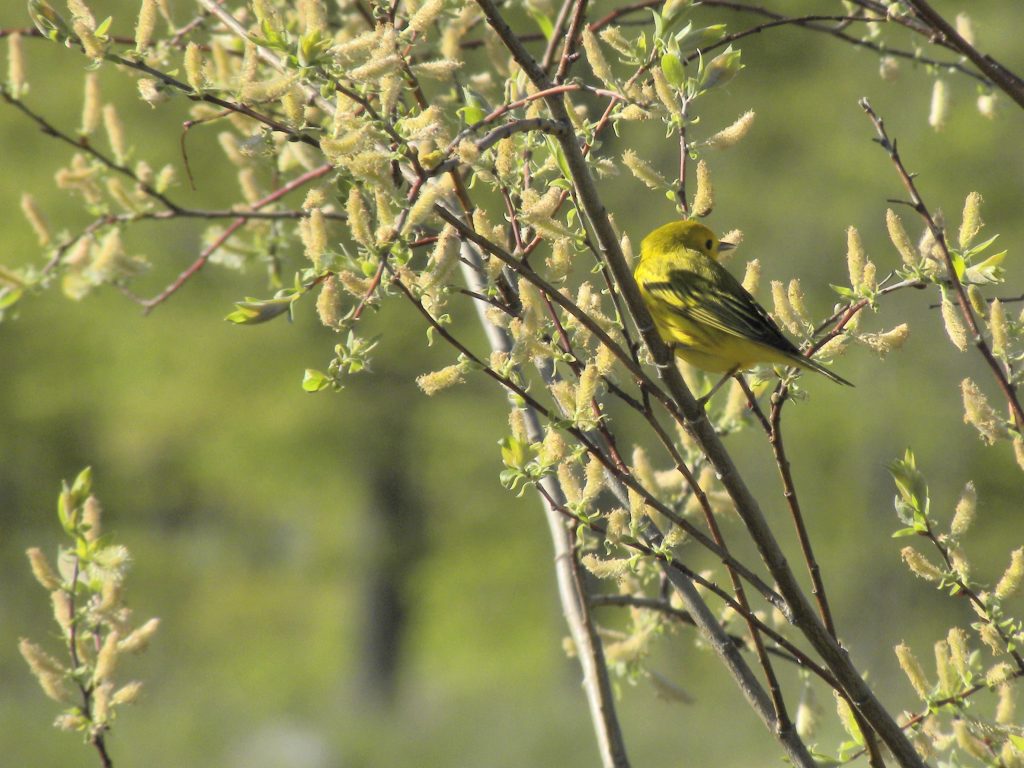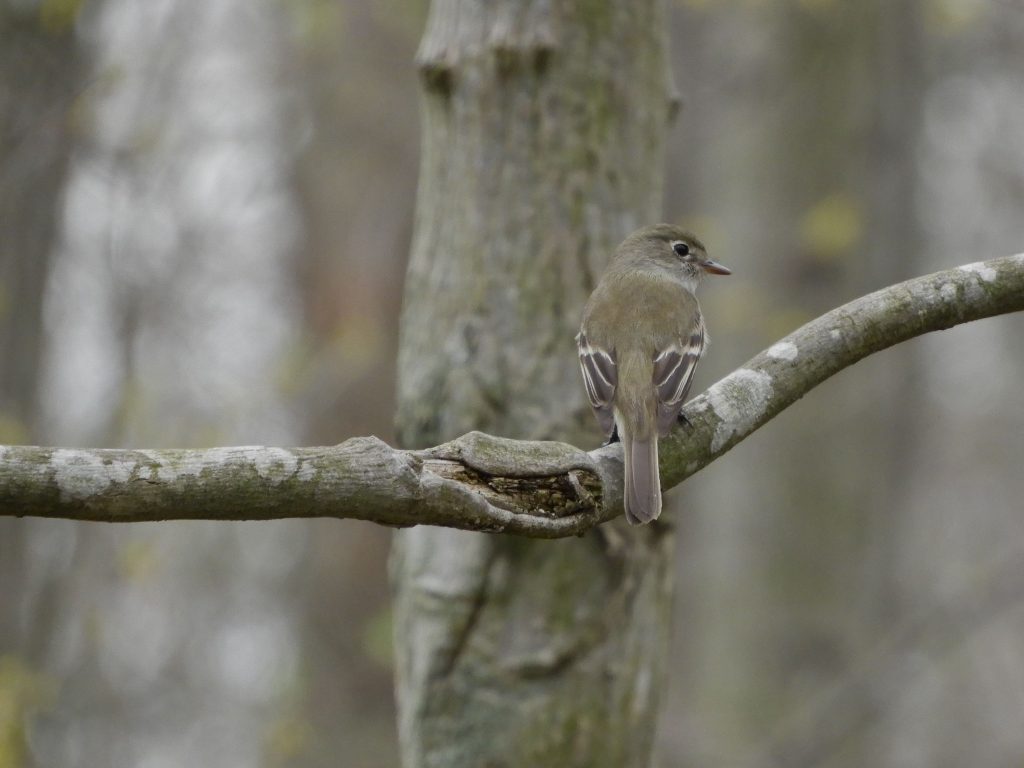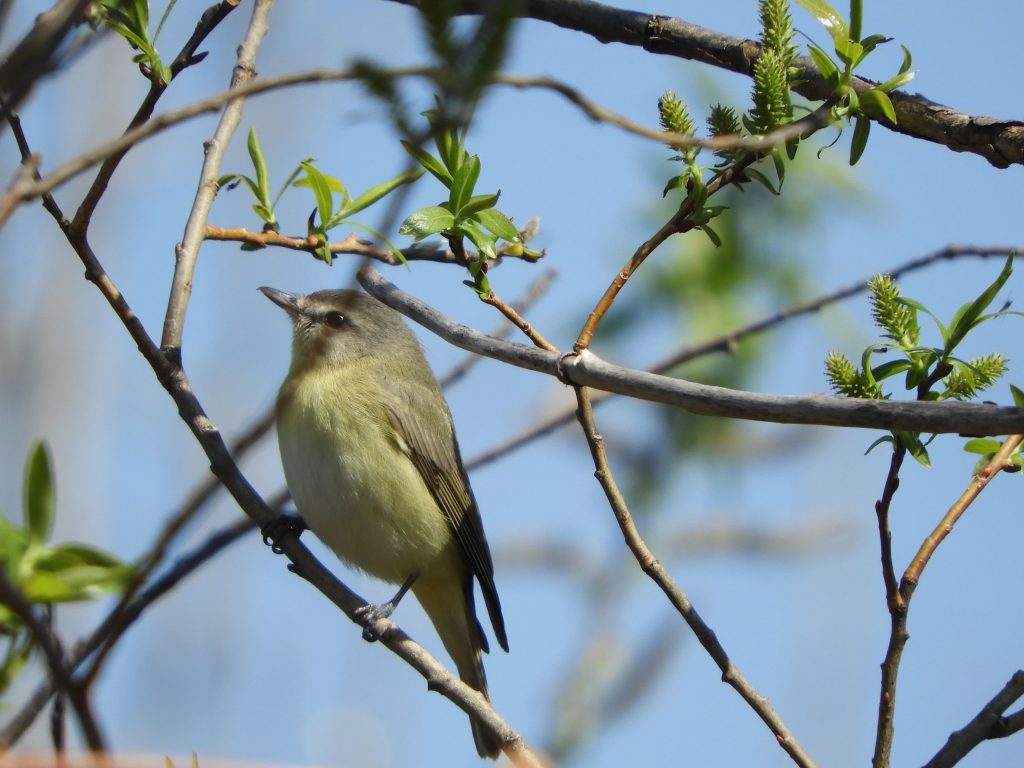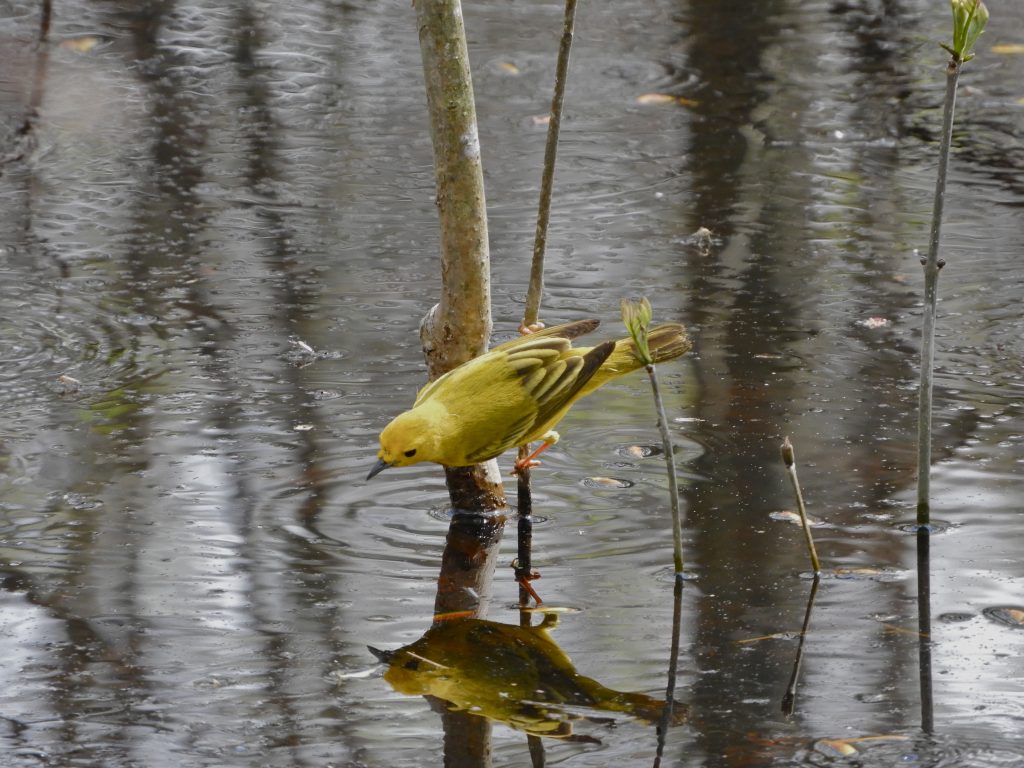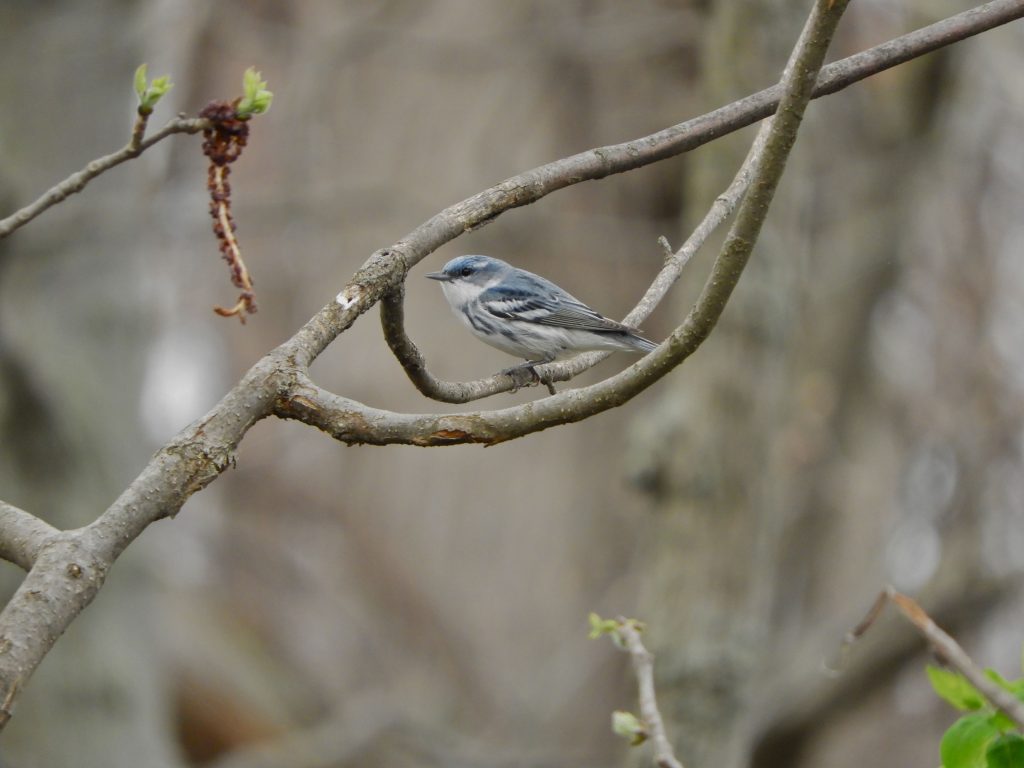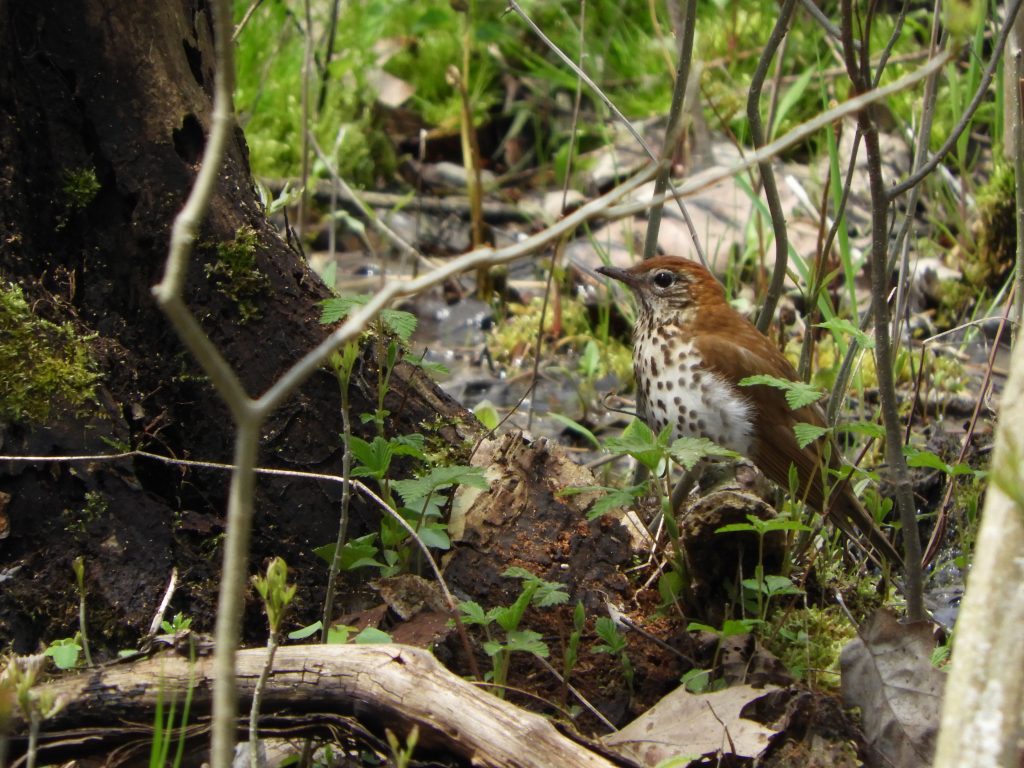May 22 2018, Belleplain Forest, NJ. This bird-packed day, in which we visited three of Cape May’s birding hot-spots, was vividly illuminated by yellow-birds, notably: Common Yellowthroat, Prothonotary Warbler, Yellow-breasted Chat and Yellow-throated Warbler. While I’m at it, and to be all-inclusive, I should also toss in Lesser Yellowlegs, although circumstances were different and frankly yellow is little more than an afterthought in that case.
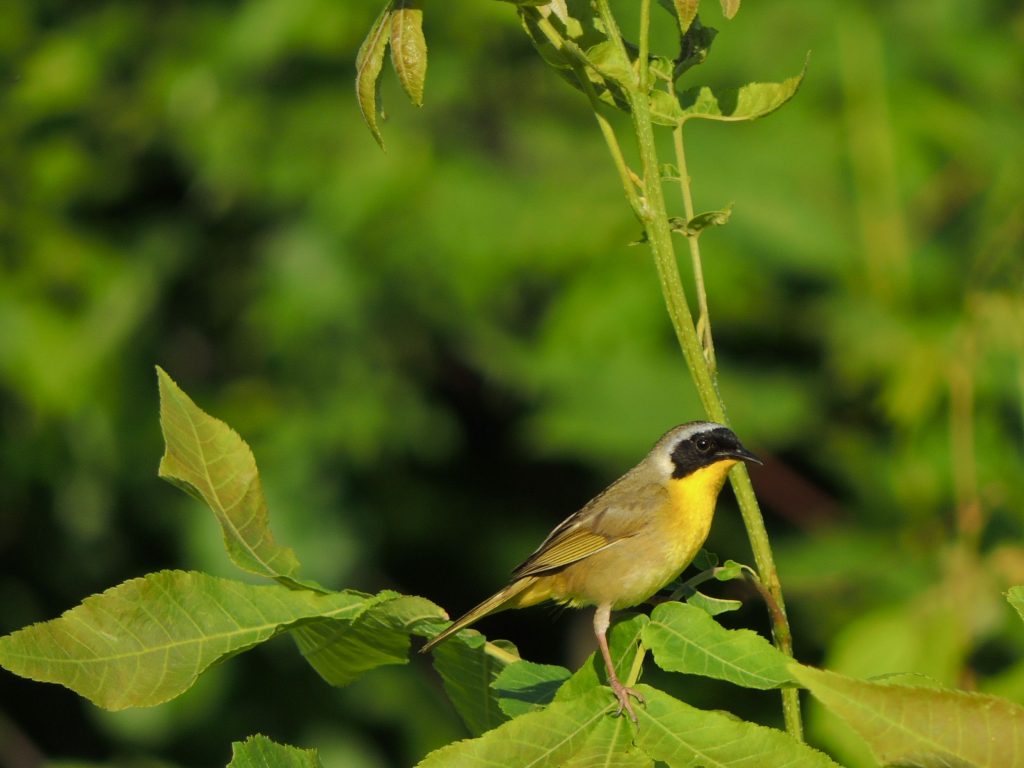
Our Common Yellowthroat was seen at the first stop, Higbee Beach, but we’re pretty familiar with them and since there was precious little else of interest (except the Indigo Bunting below), we left to explore stop number two, Cape May Point State Park.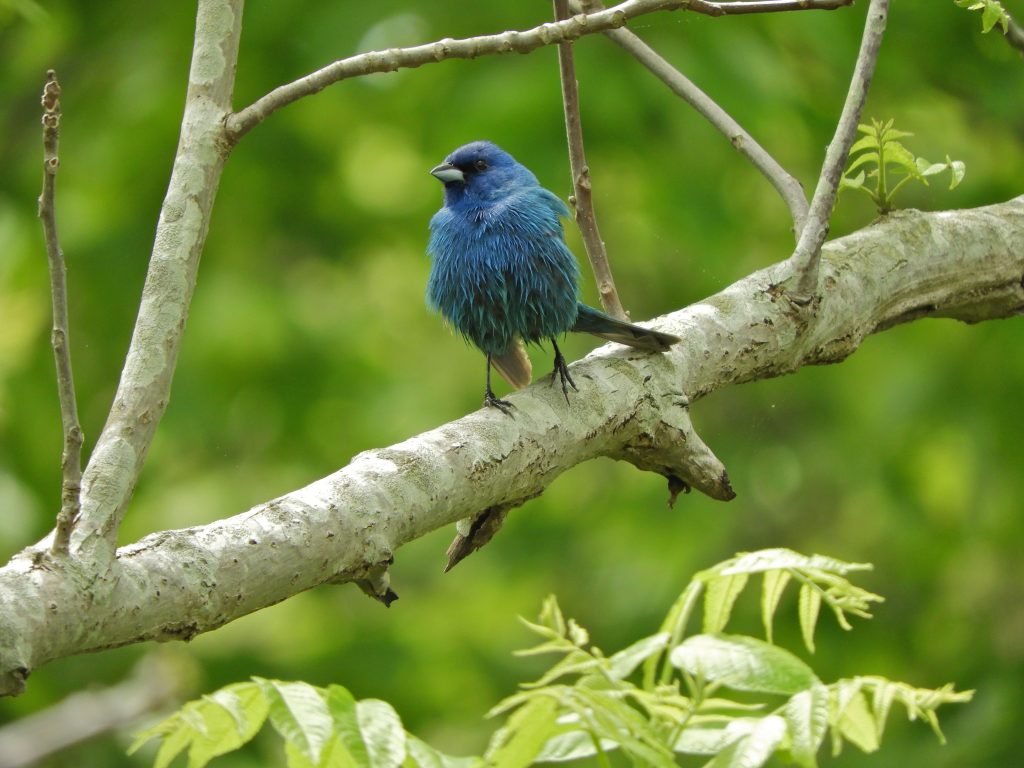
The State Park is a popular tourist stop, mostly for its lighthouse I think, although headlands, capes and lands’ ends will draw a crowd, lighthouse or not. Lighthouses have their well-earned virtues: grand views from the top, interesting stories about shipwrecks that drowned other people long ago, and they’re exceedingly helpful if you happen to be under sail twenty miles offshore at night and a little uncertain of your whereabouts. But we were securely ashore and not very much interested in the long views so we chose instead to follow a rambling and well-marked nature trail through Wax Myrtle thickets, pine forests and around a couple of interesting ponds. Part way along this trail we were held up for a while by a welcome entanglement with an evasive but vocal White-eyed Vireo, and then as it departed we turned to continue when a female Prothonotary Warbler popped into view, briefly but just long enough for this photo.
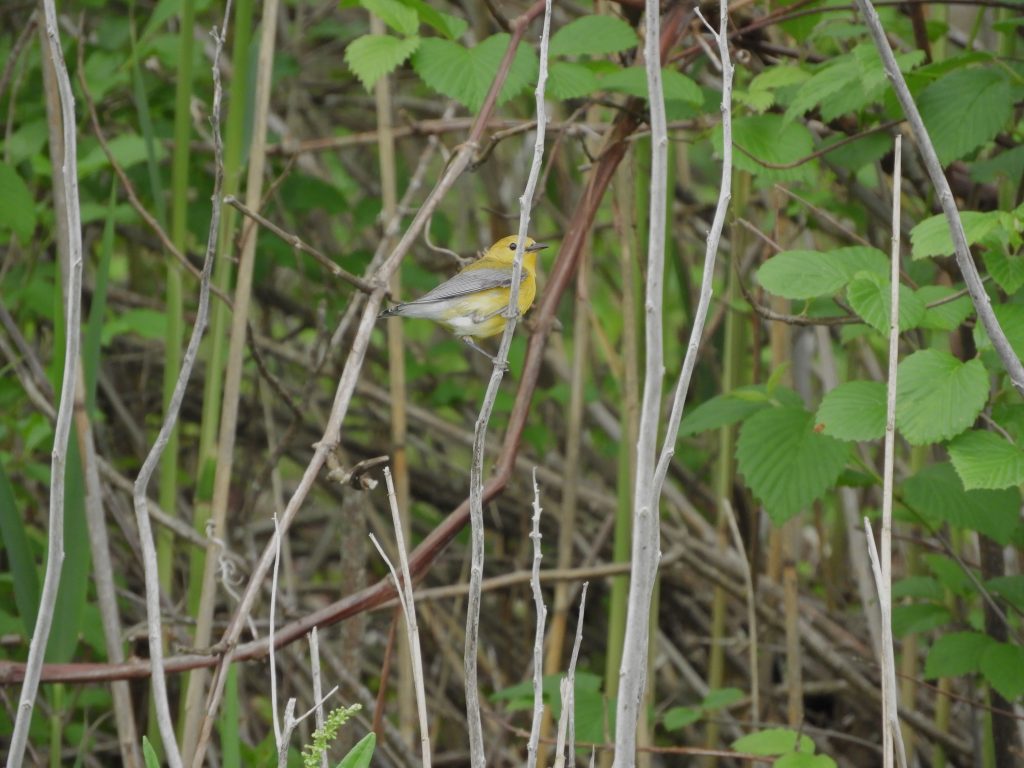
Prothonotary Warblers are trophy birds for north-eastern birders, the male’s head, neck and body are about as orangey-yellow as it’s possible to be without melting, and the female is only slightly less heated. Pete Dunne in his excellent “Essential Field Guide Companion” (worth a read, follow the link) describes the male as “An animate mote of golden sunlight moving through dark swamps.” That’s a male pictured below.
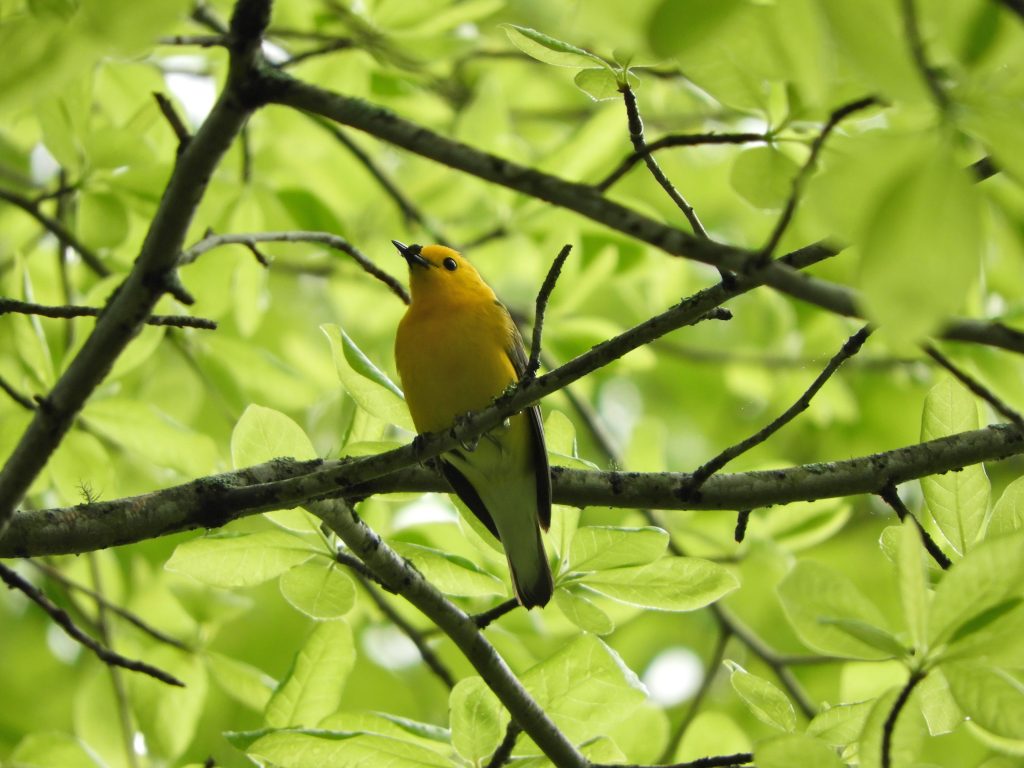
Happy with the female Prothonotary Warbler we alternately led and followed another pair of birders and only stopped dead in our tracks at the sight of a male Turkey* displaying to a largely uninterested group of females. Absurd though it may be, I thought he looked rather like an armchair, certainly he was roughly the same size. And I wondered at the devices of nature that have taken a species down this particular road of extravagant courtship display while the Prothonotary Warblers, to take a convenient example, simply makes do with a heavy dollop of colour.
More colour was just around the next corner when we both heard the demonstrative chattering, chuckling and whistling of a Yellow-breasted Chat; another trophy bird. Apart from being a captivating bird to watch and listen to, the chat is curious in many ways. Until very recently it was tentatively considered to be a warbler despite being twice the size and mass of any other warbler and exhibiting quite un-warbler-like behaviour. Indeed, on second dna-tested thought, it is free to go and have its own family of one, the Icteriidae. Status notwithstanding it was a brilliant bird to meet.
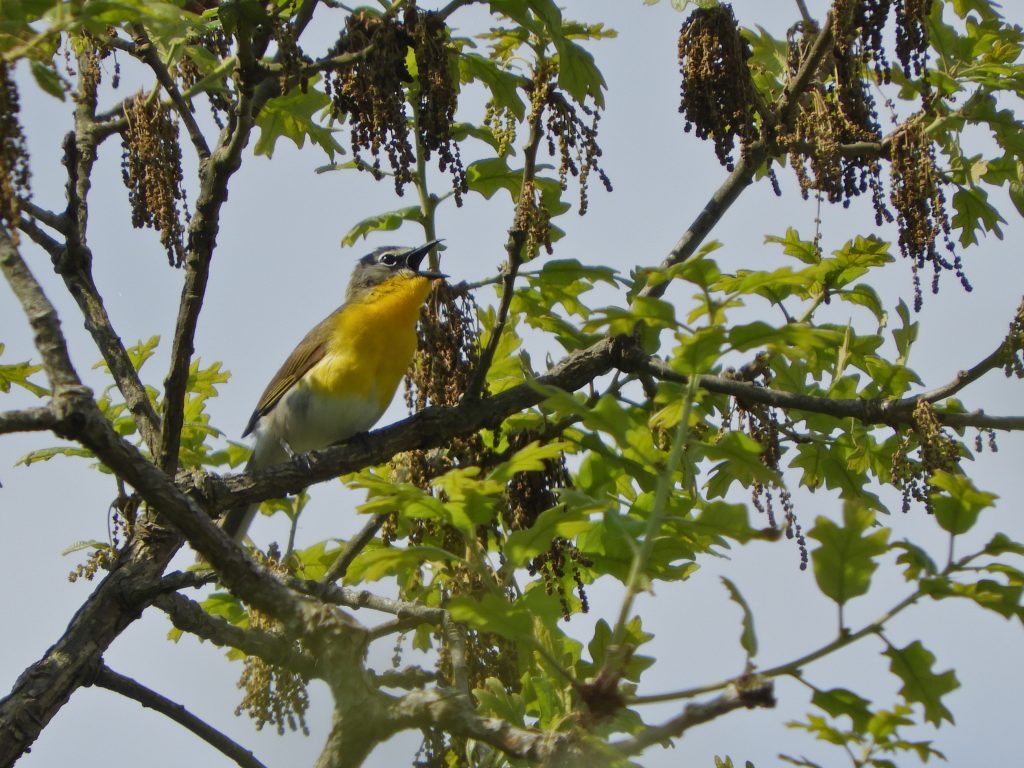
Three yellows in the bag.
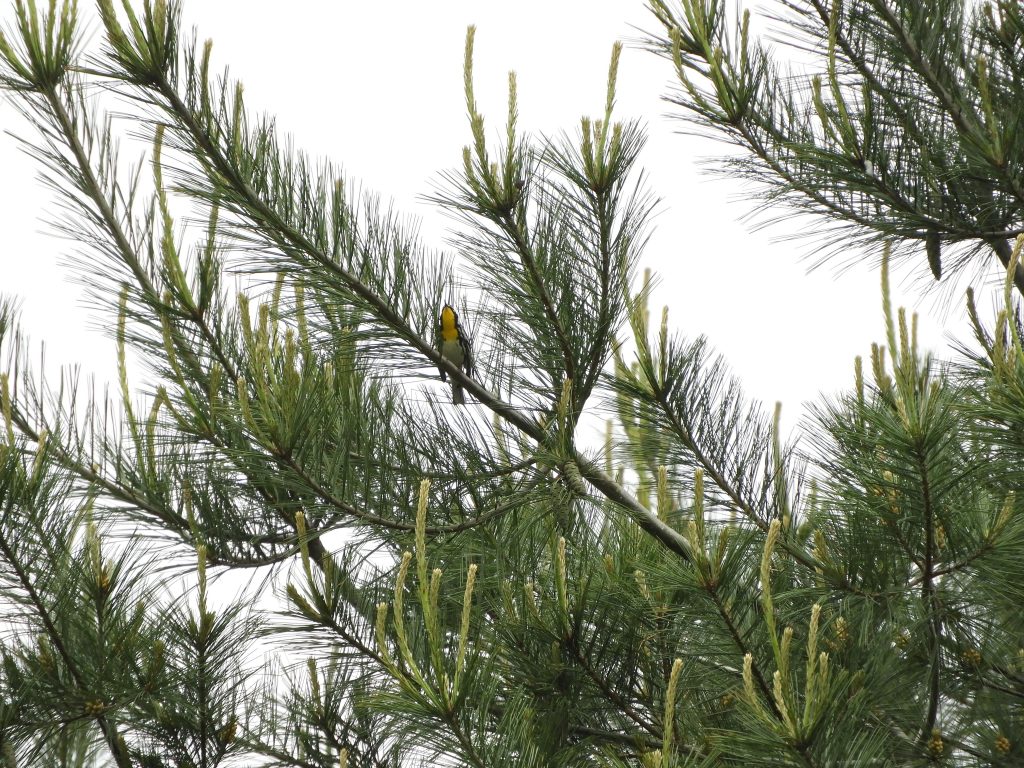
Our final yellow bird of the day, a Yellow-throated Warbler, came this evening. This species was unfamiliar to both of us and because they prefer the uppermost tips of White Pines, it took a lot of patience to find one. They were there, we could see what looked to be them flitting from tree to tree and they were singing the right song. Eventually we managed to follow one down to a lower tier and there I managed to get some crummy photographs. But camera aside, we found ourselves breathless at the drama of a small bird with an intensly yellow breast offset by bold black facial markings. THIS was my Bird of the Day, despite all the other yellows and the White-eyed Vireo, Whip-poor-will, Least and Forster’s Terns, Chimney Swifts and too many others, it topped off the day.
* I risk of being tiresome on this point. But since I’ve taken up the Quixotic cause of the name of the Turkey, I should continue to note that while 99.999999% of the world calls this bird a Wild Turkey; I don’t for good reason (I think). i.e Of course it’s wild! If it wasn’t it would probably be wrapped in plastic. There must surely be a better adjective, I petition for ‘Woodland Turkey'(?)
